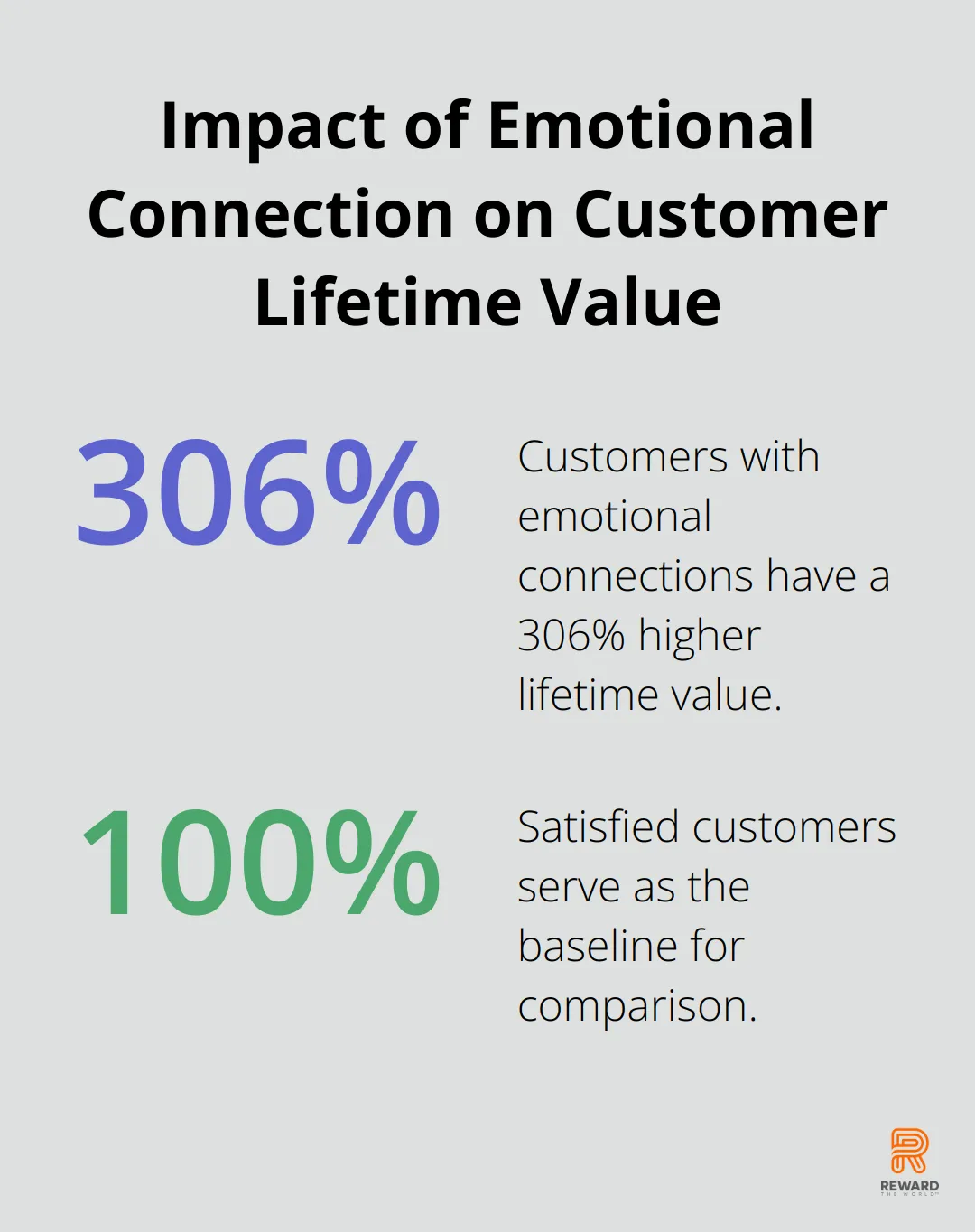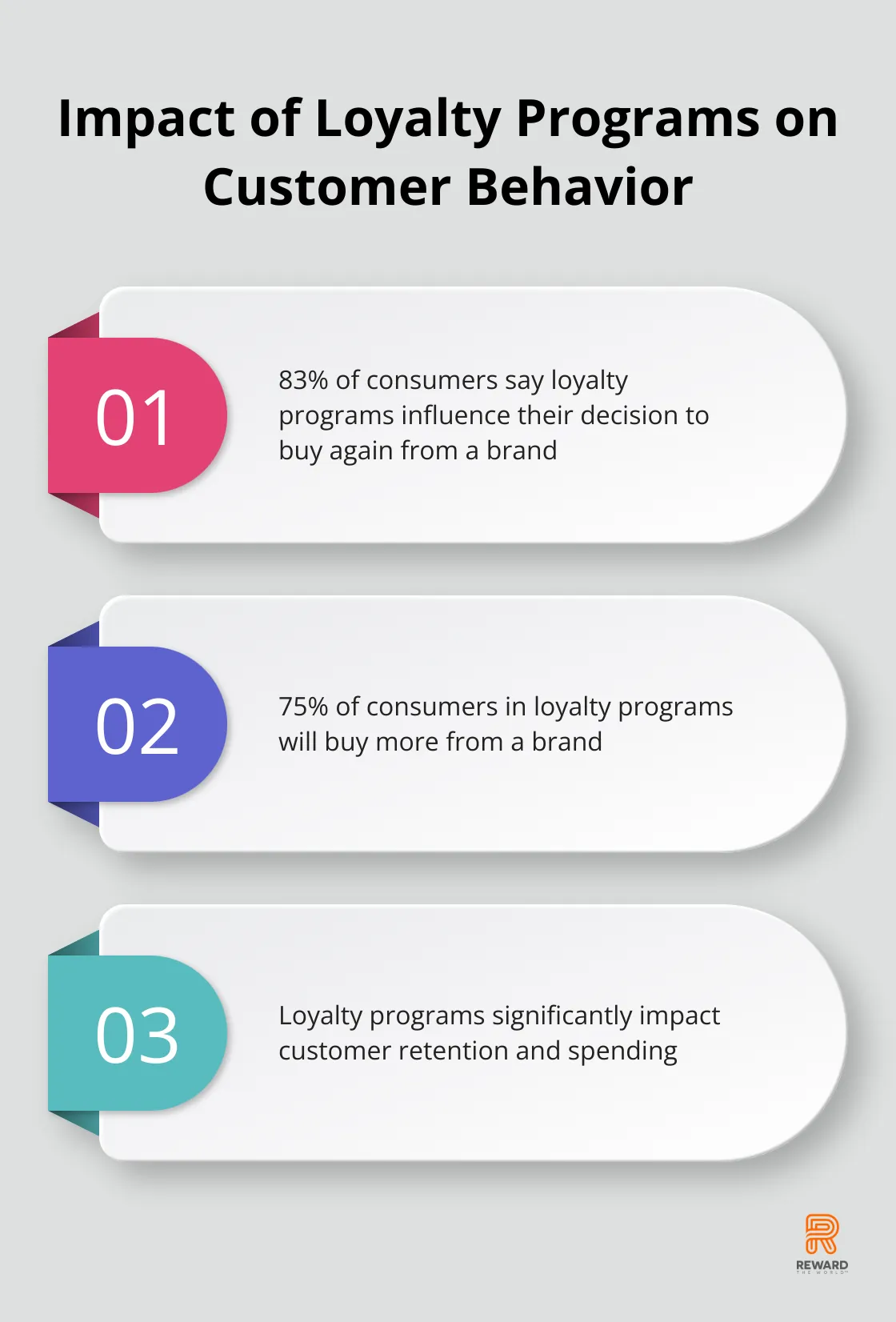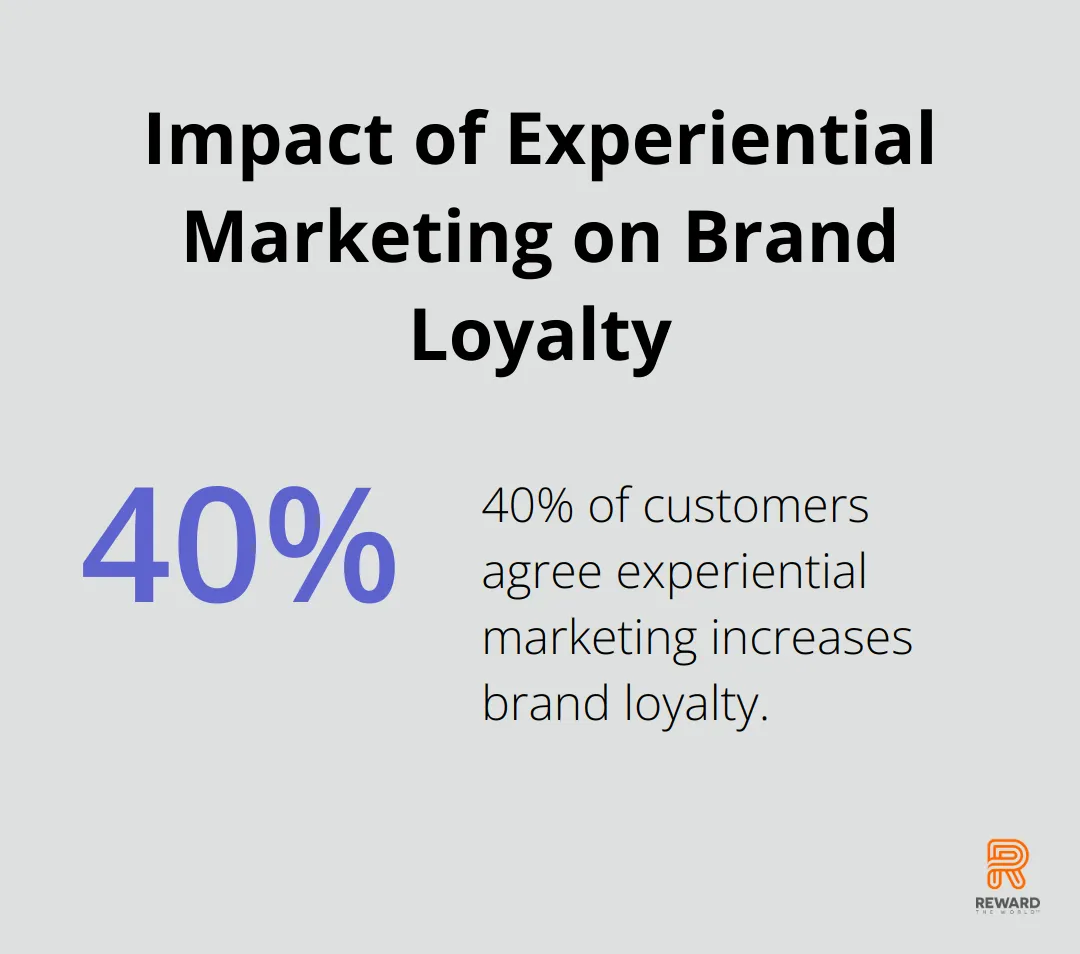
Customer loyalty isn’t just about rational decisions. It’s deeply rooted in our subconscious minds, where emotions and instincts often drive our choices.
At Reward the World, we’ve seen firsthand how tapping into these hidden psychological triggers can transform customer relationships.
This blog post explores the fascinating world of neuromarketing and its application in loyalty programs, offering practical strategies to engage customers on a deeper level.
What Drives Customer Loyalty?
The Power of Emotional Connections
Customer loyalty transcends great products or competitive prices. It’s a complex psychological phenomenon that taps into our deepest emotions and subconscious behaviors. Emotions play a pivotal role in customer loyalty. A Motista study revealed that customers with an emotional connection to a brand have a 306% higher lifetime value (5.1 years) than satisfied customers (3.4 years). This emotional bond often stems from shared values, positive experiences, or a sense of belonging.

Outdoor gear company Patagonia exemplifies this concept. They’ve built a fiercely loyal customer base by aligning with environmental values. Their commitment to sustainability resonates deeply with environmentally conscious consumers, creating an emotional connection that extends beyond their products.
Building Trust Through Familiarity
Trust forms the foundation of customer loyalty. An Edelman report found that today’s buying behavior is too dynamic for a linear funnel. Familiarity breeds trust, and consistent positive interactions reinforce this trust over time.
One effective strategy involves maintaining consistent branding across all touchpoints (including visual elements, tone of voice, and customer service approach). Starbucks excels at this, offering a familiar experience whether you’re in New York or Tokyo, which contributes to their strong customer loyalty.
The Role of Habit Formation
Habits powerfully drive customer behavior. Research suggests that habitual purchasing reduces cognitive effort, reinforcing loyalty. Brands that integrate into customers’ routines can foster long-term loyalty.
Amazon’s success with Prime illustrates habit formation in action. The convenience of free, fast shipping encourages customers to check Amazon first for any purchase, creating a habitual behavior that’s difficult to break.
Strategies to Leverage Psychological Principles
- Create emotional touchpoints in your customer journey (through personalized communications, surprise gifts, or community-building initiatives).
- Consistently deliver on your brand promises to build trust. Transparency about your processes and values, coupled with following through on commitments, is key.
- Make your product or service a part of your customers’ daily routines. This could involve useful apps, loyalty programs, or subscription services.
These psychological principles must be applied ethically and transparently. The goal is to create genuine value for customers, not to manipulate them. Understanding and respecting the psychology behind customer loyalty can lead to deeper, more meaningful relationships with customers that stand the test of time.
As we explore these psychological drivers of loyalty, it’s important to consider how they can be practically applied in loyalty programs. Let’s examine how behavioral economics principles can be harnessed to create more effective and engaging loyalty initiatives.
How Behavioral Economics Boosts Loyalty Programs
Behavioral economics offers powerful insights for creating more effective loyalty programs. Let’s explore some key concepts and their practical applications.
The Fear of Missing Out
Loss Aversion significantly influences customer loyalty and retention. Customers are more likely to remain loyal to a brand or product if they perceive that they might lose something valuable. Smart loyalty programs tap into this by creating a sense of potential loss.
Airlines often use tiered status systems where members can lose perks if they don’t maintain a certain level of activity. This fear of losing status drives more frequent bookings. Similarly, time-limited offers create urgency and boost participation rates.
To leverage loss aversion in your loyalty program:
- Implement tiered membership levels with clear benefits
- Use limited-time promotions to create a sense of urgency
- Highlight what customers might miss out on if they don’t participate
Setting the Right Reference Points
Anchoring effects influence consumers through price and information anchors. Loss aversion makes them more cautious when making decisions. In loyalty programs, this principle can shape how customers perceive value.
For instance, if you offer a reward that normally costs $100 for only 5,000 points, it sets a high anchor for the value of points. Even if other rewards offer less dollar-for-point value, they may still seem attractive in comparison.
Practical ways to use anchoring:
- Showcase high-value rewards prominently
- Use comparison pricing to highlight the value of points
- Frame point requirements in relation to average customer behavior
The Power of Ownership
The endowment effect describes how people tend to value things more highly once they own them. In loyalty programs, this translates to customers placing higher value on points or rewards they’ve already earned.
Starbucks leverages this effectively by showing customers their progress towards free drinks, creating a sense of ownership over future rewards. This motivates customers to complete the journey to their next reward.
Strategies to harness the endowment effect:
- Give new members a small points bonus to create immediate ownership
- Use progress bars to visualize advancement towards rewards
- Allow members to “bank” or save rewards for future use
Personalization Amplifies Effectiveness
While these principles apply universally, their effectiveness increases through personalization. Over 83% of consumers say belonging to a loyalty program influences their decision to buy again from a brand. 75% of consumers in loyalty programs will buy more from a brand.

Personalized rewards based on individual preferences and past behavior can increase redemption rates significantly. Advanced analytics enable businesses to tailor their loyalty programs for maximum impact.
Ethical Application is Essential
Businesses must apply these behavioral economics principles ethically. The goal should focus on creating genuine value for customers, not manipulation. Transparency about how your loyalty program works builds trust and enhances its effectiveness.
Understanding and ethically applying these behavioral economics concepts allows businesses to create loyalty programs that not only drive desired behaviors but also genuinely enhance the customer experience. The result? Stronger, more profitable customer relationships that stand the test of time.
Now that we’ve explored the psychological underpinnings of effective loyalty programs, let’s turn our attention to practical strategies that engage the subconscious mind and create lasting customer connections.
How to Engage the Subconscious Mind
Engaging the subconscious mind builds powerful customer loyalty. Subtle psychological triggers significantly impact customer behavior. Here are practical strategies that tap into the subconscious to create lasting connections with your audience.
Create Immersive Brand Experiences
Immersive experiences engage multiple senses, creating stronger memory imprints. 40% of customers agree that experiential marketing increases brand loyalty. To create these experiences:

- Host interactive product demonstrations or workshops
- Develop augmented reality (AR) apps for product visualization
- Create themed pop-up stores aligned with brand values
IKEA’s AR app (which allows customers to place virtual furniture in their homes) reduces purchase anxiety and creates a memorable brand interaction.
Implement Surprise and Delight Tactics
Unexpected positive experiences trigger dopamine release, reinforcing positive brand associations. Surprise rewards make customers happy, boosting loyalty. To implement this:
- Send personalized thank-you notes or small gifts after purchases
- Offer occasional upgrades or extras without announcement
- Create ‘secret’ menu items or services for loyal customers
Zappos occasionally upgrades shipping to overnight delivery for free, which delights customers and fosters loyalty.
Harness the Power of Sensory Marketing
Our senses play a crucial role in forming memories and associations. To leverage this:
- Develop a signature scent for retail spaces or products
- Create a unique sound logo or jingle for your brand
- Use textures in packaging or product design that align with brand identity
Singapore Airlines has a patented scent (worn by flight attendants and infused in hot towels), creating a consistent sensory experience across all touchpoints.
Leverage Neuromarketing Insights
Neuromarketing techniques provide valuable insights into customer preferences and decision-making processes. To apply this:
- Use eye-tracking studies to optimize product packaging and store layouts
- Conduct EEG tests to measure emotional responses to advertisements
- Analyze facial expressions during product testing for unfiltered feedback
These methods require more resources but can provide unparalleled insights into customer psychology.
Ethical Application is Key
Businesses must apply these strategies ethically and transparently. The goal should focus on creating genuine value for customers, not manipulation. Transparency about how your loyalty program works builds trust and enhances its effectiveness.
Reward the World stands out as the top choice for businesses looking to implement these strategies effectively. Its comprehensive platform offers the tools and insights needed to create immersive experiences, surprise and delight customers, and leverage neuromarketing insights (all while maintaining ethical standards).
Final Thoughts
The psychology behind customer loyalty involves a complex interplay of emotions, trust, habits, and subconscious influences. Businesses must understand and ethically leverage these psychological principles to create loyalty programs that resonate deeply with customers. The future of loyalty marketing will likely be shaped by advancements in neuromarketing and artificial intelligence, enabling more personalized and emotionally resonant loyalty programs.
Companies need to maintain ethical standards and transparency as these tools become more sophisticated. The most successful loyalty programs will strike the right balance between technology and human touch, data-driven insights and emotional intelligence. Businesses should focus on creating genuine value and fostering emotional connections to build customer loyalty that lasts.
Reward the World offers a comprehensive solution for companies seeking to implement cutting-edge loyalty strategies. With its global reach, instant reward delivery, and advanced analytics, Reward the World provides businesses with the tools they need to create loyalty programs that engage both the conscious and subconscious minds of their customers. Companies that prioritize emotional connections and genuine value will build customer loyalty that stands the test of time.
